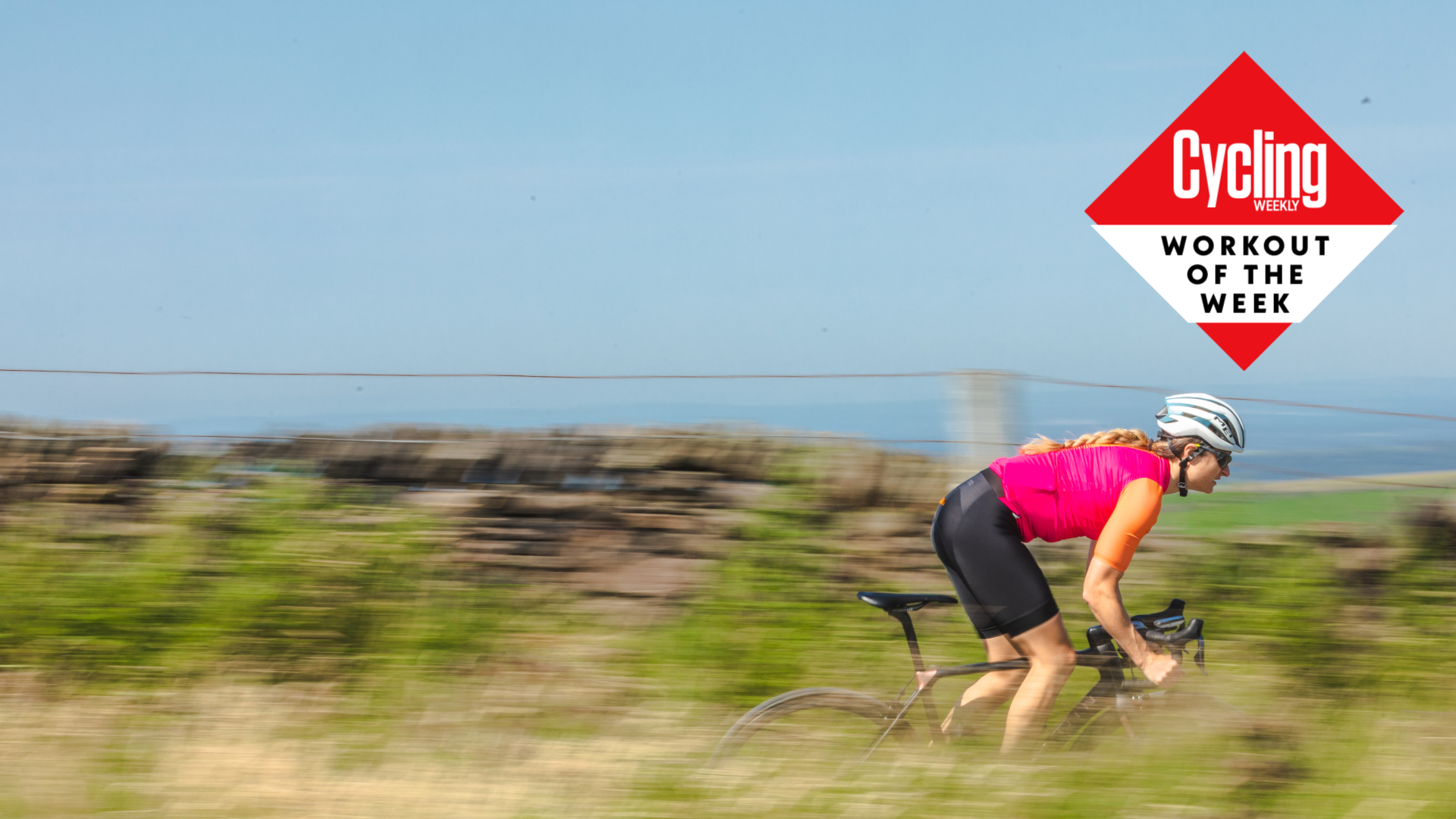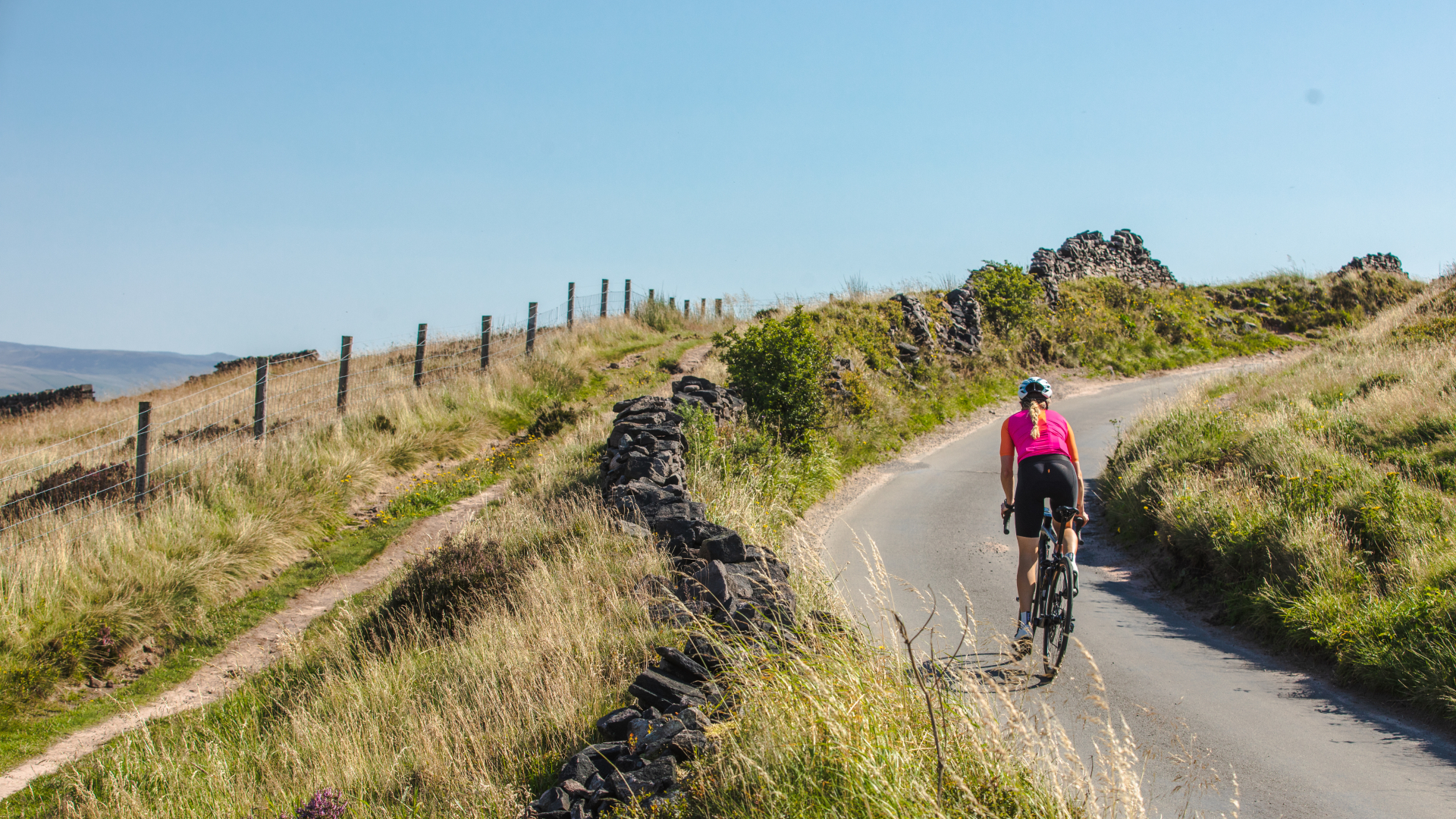Cycling workout of the week #2: Glycolytic Capacity Efforts - Short hills? Long sprints? Same session. [1hr 3 mins]
Do if… you love short, sharp and steep hills (–or if they’re your nemesis), plus it’s also good training for long, drawn-out sprints


We’ll be bringing you a fresh new workout every monday in our new CYCLING WORKOUT OF THE WEEK series - we’ll explain the benefits of sessions and provide an outdoor alternative targeting the same systems.
Although the efforts in this cycling workout are only very short – at just one minute long – these will feel very hard and near maximal. Be prepared to dig deep, but don’t be tempted to go too hard early on as you’ll want to still be able to maintain the same output in the last interval.
This is a particularly useful cycling workout for those targeting shorter hill climb events where glycolytic muscle fibres will be the primary source of power. And also for longer efforts, such as at the end of a road race, where you want to catch everyone off guard a bit and go for that long drawn out sprint effort.
Even if you don’t have any target events, this is still a nicely tough HIIT cycling workout for a quick and efficient fitness boost.
This cycling workout starts with a long warm up, and is followed by 4 x 1 minute “very hard” efforts with six minutes rest.
To download the session click on the embedded graph above. If you’re not already set up on TrainerDay it’ll ask you to register for an account - it’s free to do so and it’s free to download the session.
Simply explained
The muscle fibres you use in high intensity efforts are actually distinct to the ones used in endurance efforts - so you could potentially be doing hours of training but leaving this whole area completely neglected.
The latest race content, interviews, features, reviews and expert buying guides, direct to your inbox!
These one minute efforts will activate that energy system, helping to improve your climbing, more specifically your ability to blast up short, sharp and steep hills. It’ll also boost the amount of power – and duration – you can sustain for a long, drawn-out sprint. Great for catching people off-guard in a road race or blasting your way up the pack in a Zwift race at 500m to go.
Let's geek out...
Efforts such as those in this cycling workout are referred to as glycolytic efforts because of the way in which we produce power at these intensities. This happens when we break down glucose into lactate without using oxygen (anaerobically) and, although it doesn’t produce as much ATP (Adenosine Triphosphate, which our body uses as energy for every action), it produces it far more quickly than breaking down fats or carbohydrates aerobically.
The type of muscle that produces power this way is also different. When we do low intensity and primarily aerobic efforts, we use Type 1 muscle fibres (Slow Oxidative), whereas glycolytic efforts use Type 2A and 2B fibres (Fast Oxidative and Fast Glycolytic). These Type 2 fibres have more ATPase (the group of enzymes that hydrolyse ATP) and therefore produce muscle contractions far quicker than Type 1 fibres, allowing for faster and more explosive movements.
In other words, you can reach maximal tension more quickly therefore producing a higher power, power being a combination of the force and the speed at which force is produced.
So, how does this cycling workout help? Well, as with all training, we adapt to the stress we present the body with. In this case, we present the body with a highly glycolytic effort which requires ATP very quickly to produce high power. When we do these types of efforts, the training response from the body is to increase the amount of glycolytic enzymes and ATPase in the muscle fibres, thus increasing the rate of energy production and our capacity to produce these high-powered efforts.
Golden Rule
Stick to the power numbers as best as possible; you don’t want to go too hard to start with and then find that you can’t produce the power by the end of the effort or find yourself weakened for the final effort. Your muscles will fatigue quickly so it’s important to go very easy between the efforts in this cycling workout.
Sunny out? How about…

For conducting the efforts in this cycling workout on the road, hill reps are an ideal way to do this. Find a hill that you know takes you a minute or longer to get to the top of and do your efforts up there. Once you’ve done the minute interval, return to the bottom of the hill and spin easy for the six minutes recovery before the next effort.
Don’t worry too much if there is a longer rest period between the efforts, or a longer warm up or cool down is needed to get to and from an appropriate hill.
These efforts can be done seated or out of the saddle, and you can play around a bit with the cadence depending on what feels most suitable for you. The key here is getting one minute at a high enough power to elicit the training stress that we are looking for.
Stay tuned for next week’s session, we'll be bringing you a fresh new cycling workout every Monday.
In the meantime you can find more indoor cycling sessions for turbo training here, sessions specifically if you only have 30 minutes spare to work out here, and training plans for beginners, intermediates and racers here.
Or how about having a go at one of the previous cycling workouts of the week:
Andy is a Sport & Exercise Scientist, fully qualified and experienced Cycling Coach, Sports Director, Freelance Writer, and Performance Consultant. He spent 3 years riding for a UCI cycling team and 7 years as a BC Elite rider, competing in prestigious events such as the Tour of Britain and the Volta a Portugal.
Graduating with a first-class honours degree in Sport & Exercise Sciences, he continues to pursue his interest in research in the field of Sport Science alongside managing his coaching business, ATP Performance. He also works as a Wind Tunnel operator and Performance Consultant at the Silverstone Sports Engineering Hub, working with individuals, teams, and businesses to optimise performance and develop products.
